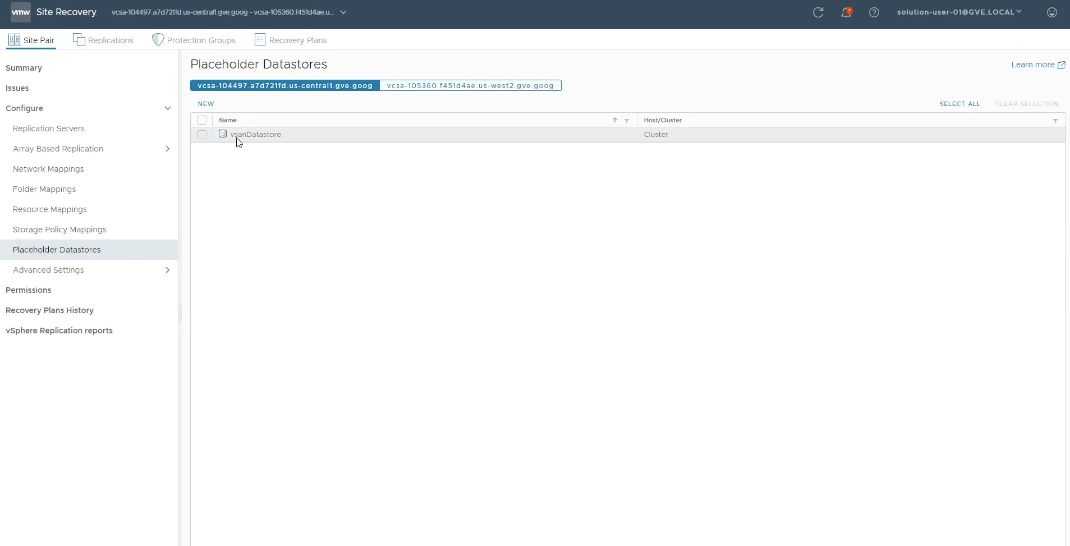Resource Mapping for Site Recovery Manager for Google Cloud VMware Engine
Overview
Once the site pairing is completed, Site Recovery Manager provides additional resource mapping between sites. The mapping wizard provides options to map Network, Folder, and Storage Policy Mapping.
- Automatically prepare mappings with matching names - Here the system automatically prepares mappings for networks with matching names under the selected network containers.
- Prepare mappings manually - Choose this option to manually select which networks to map.
To create a DR plan, you must configure several parameters to be run during a recovery. These parameters include the creation of a protection group, replicated VM datastore, inventory mapping (network, resource pool, folder), and more.
The following figure is the Summary page that shows all the required information regarding the paired sites.

Figure 1 - Summary Page for Paired Sites
Network Mapping
Network mapping consists of three configuration options.
- Recovery Network - used to map the site 1 network labels to site 2 network labels.
- Reverse mapping - flag available to choose if the mapping is also needed to configure bi-directionally as per configuration in recovery network.
- Test Networks - This option helps determine how the test network needs to be created. This test network is used when test recovery is executed. You can choose to auto-create an isolated network or choose from an existing pre-defined test network.
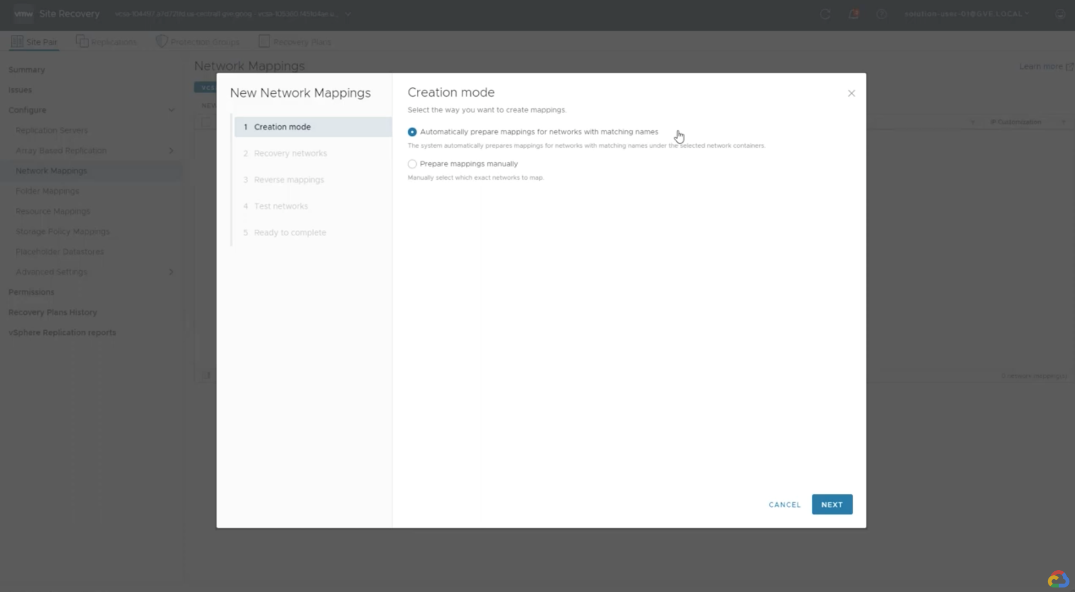
If you choose option 1, the network used for Management nodes is excluded and only workload network mapping is performed. This is done to ensure we do not map the SDDC management network.
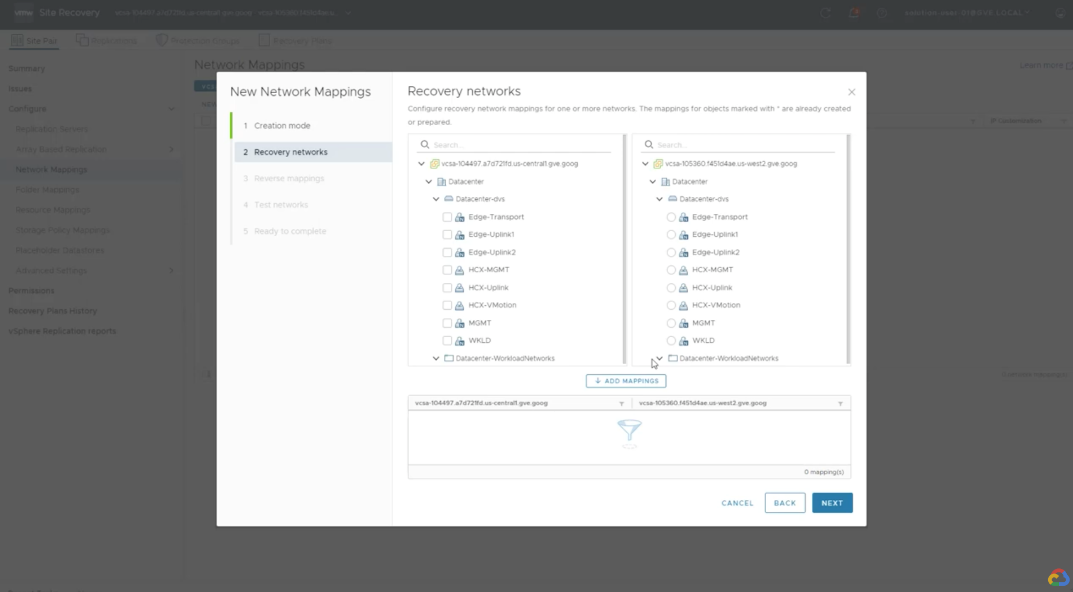
IP Customization
You can customize IP settings for virtual machines for the protected site and the recovery site. Customizing the IP properties of a virtual machine overrides the default IP settings when the recovered virtual machine starts at the destination site.
If you do not customize the IP properties of a virtual machine, Site Recovery Manager uses the IP settings for the recovery site during recovery or test from the protection site to the recovery site. Site Recovery Manager uses the IP settings for the protection site after reprotect during the recovery or a test from the original recovery site to the original protection site.
IP customization is applied on a network mapping level on this screen. This can also be applied at the virtual machine level which is detailed in the later section in this document. Select the network mapping created and click more options in the user interface to add the IP range, Gateway, and DNS information to be used during customization for this mapping on applicable virtual machines.
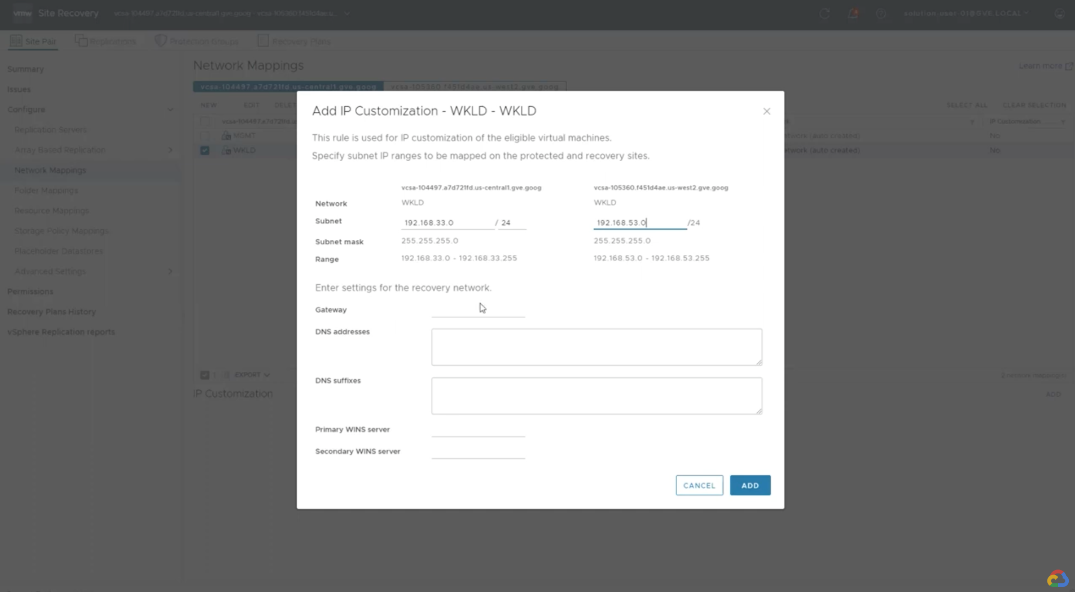
Folder Mapping
The Folder mapping page on the Site pair wizard displays a subset of the vCenter object inventory for both the source and target vCenters. The mapping here corresponds to VM and template view on the SDDC. The flags available in this wizard are:
- Configure recovery folder mappings for one or more folders.
- Select configured mappings for which to automatically create reverse mappings. Caution:This might overwrite existing mappings (manually configured in any other mapping created).
Resource Mapping
Mapping of clusters and resource pools can be configured using the resource mapping options. This wizard ensures the mapping is done by manually choosing the resources on either site. The flag for Reverse mappings is available mapping is easier to configure with once click for both sites.
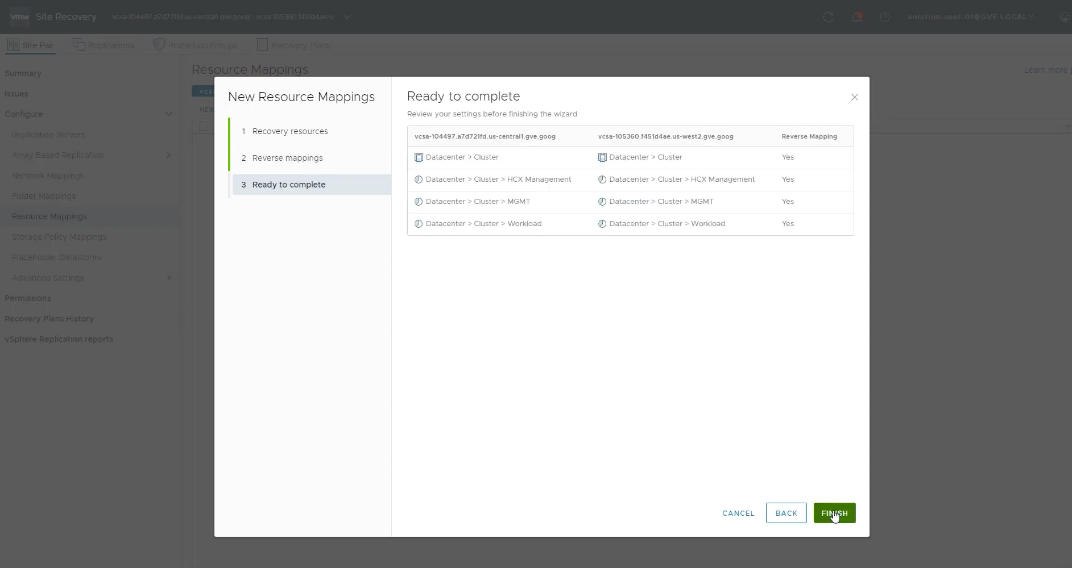
Storage Policy Mapping
Since the primary storage that is supported is vSAN, we also need to perform Storage Policy Mappings. Mapping creations can be automatic (based on names) or manual in forward and Reverse Mapping.
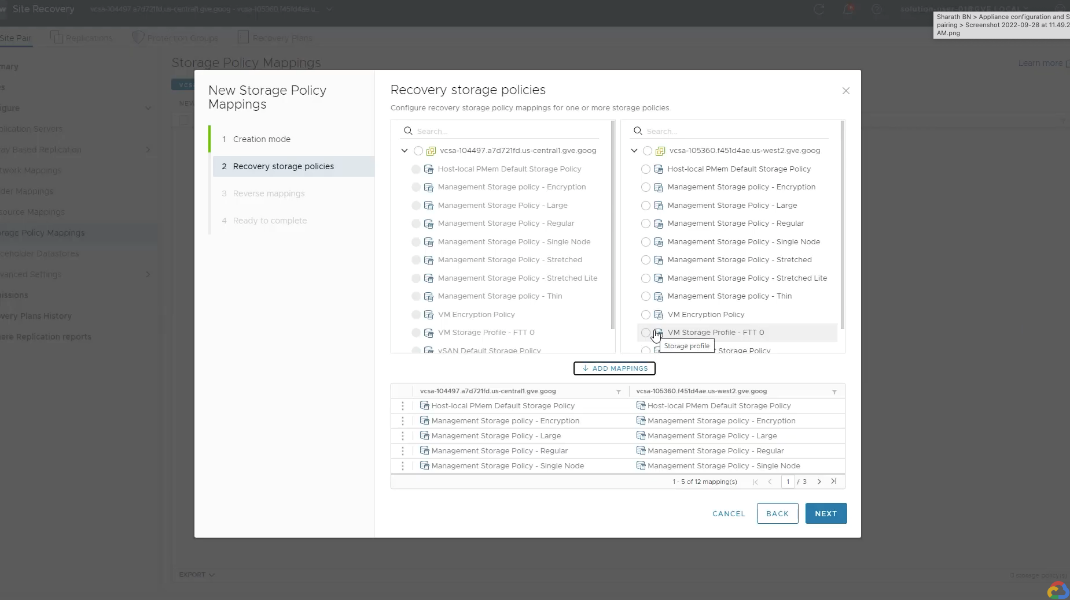
Placeholder Datastores
A placeholder virtual machine is a subset of virtual machine files. Site Recovery Manager uses that subset of files to register a virtual machine with vCenter Server on the recovery site.
The files of the placeholder virtual machines are very small, and do not represent full copies of the protected virtual machines. The placeholder virtual machine does not have any disks attached to it. The placeholder virtual machine reserves compute resources on the recovery site and provides the location in the vCenter Server inventory to which the protected virtual machine recovers when you run recovery.
The presence of placeholder virtual machines on the recovery site inventory provides a visual indication to vCenter Server administrators that the virtual machines are protected by Site Recovery Manager. The placeholders also indicate to vCenter Server administrators that the virtual machines can power on and start consuming local resources when Site Recovery Manager runs tests or runs a recovery plan.
When you recover a protected virtual machine by testing or running a recovery plan, Site Recovery Manager replaces the placeholder with the recovered virtual machine and powers it on according to the settings of the recovery plan. After a recovery plan test is executed/completed, Site Recovery Manager restores the placeholders and powers off the recovered virtual machines as part of the cleanup process.
This is per vCenter configuration which must be configured by clicking on each tab.
